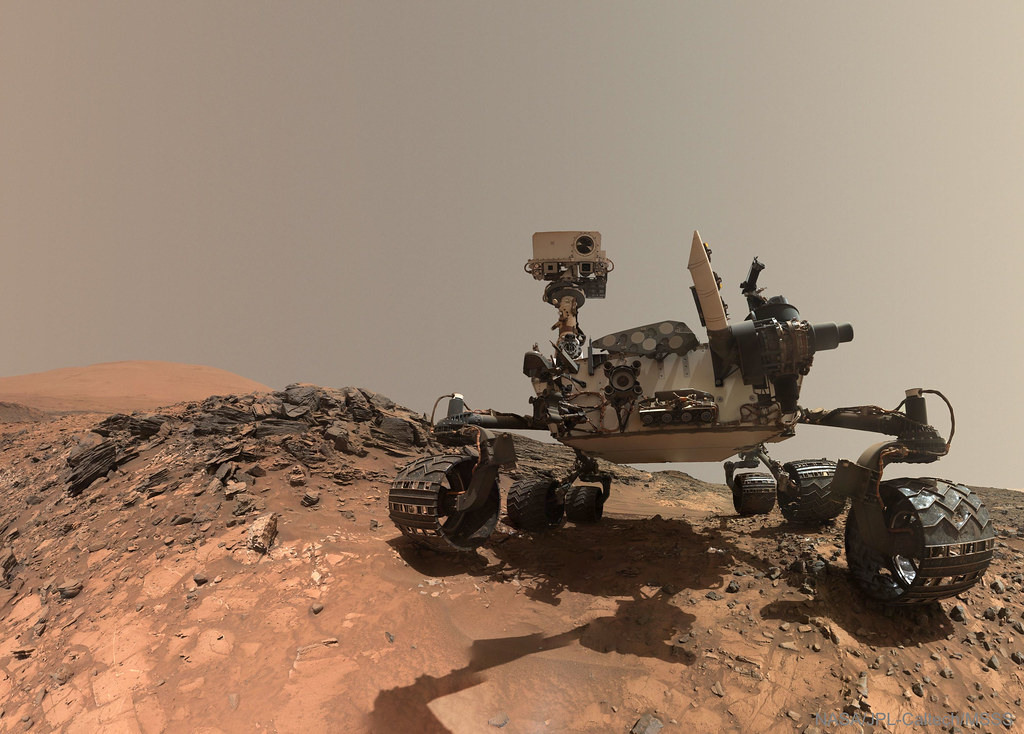Evidence continues to mount regarding the presence of a wealth of organic molecules on Mars, potentially indicating signs of life. NASA’s Perseverance rover has recently provided new findings, suggesting the existence of a diverse range of organic molecules within rocks at a location where a lake once thrived.
The latest evidence stems from the utilization of SHERLOC, an instrument mounted on the robotic arm of the six-wheeled rover. SHERLOC enables comprehensive mapping and analysis of organic molecules. Researchers have shared the findings from SHERLOC’s investigations at ten distinct sites within two geological formations situated on the floor of Jezero crater.
The results indicated the presence of organic molecules in multiple rock samples, including some collected with the intention of returning them to Earth for future analysis. However, it is important to note that the existence of such molecules does not conclusively prove the existence of past or present life on Mars. Non-biological processes remain a more plausible explanation, as these organic molecules can also be formed through geological mechanisms unrelated to life.
“Organics are the fundamental building blocks of life as we understand it, but they can also arise from geological processes independent of life. We have observed multiple signals that appear to vary across different formations on the crater floor and in the minerals they are associated with,” stated astrobiologist Sunanda Sharma of NASA’s Jet Propulsion Laboratory in California, the lead author of the recently published research in the esteemed journal Nature.
Perseverance, primarily tasked with seeking evidence of ancient life on Mars and collecting rock and soil samples for potential return to Earth, touched down in Jezero crater in February 2021. The crater, located in the planet’s northern hemisphere, was once submerged in water and hosted an ancient lake basin.
Mars, in its ancient history, was not always the inhospitable environment we know today. Liquid water existed on the planet’s surface in the distant past, leading scientists to believe that microbial life could have once thrived within Jezero crater. It is hypothesized that river channels overflowed, spilling into the crater and creating a lake over 3.5 billion years ago.
SHERLOC, an acronym for Scanning Habitable Environments with Raman and Luminescence for Organics and Chemicals, successfully detected signals of organic molecules at all ten locations studied on the crater floor. The rocks analyzed were igneous, originating from volcanic activity.
SHERLOC employs cameras, a laser, and spectrometers to analyze light wavelengths and search for organic molecules that could be remnants of past microbial life. The SHERLOC instrument works in tandem with WATSON, a color camera designed to capture close-up images of rock grains and surface textures, paying homage to the iconic character Sherlock Holmes.
While the specific organic compounds detected by SHERLOC remain unknown, researchers have gathered some clues. Ryan Roppel, a study co-author and chemistry graduate student at the University of Pittsburgh, suggested that the chemical signatures may correspond to compounds like benzene or naphthalene.
“These compounds are commonly found in crude oil on Earth, which has a biotic origin, but they can also be synthesized through various chemical reactions,” Roppel explained.
He added, “Although the concentrations we’ve detected are generally low, we have observed signals associated with organics in almost every rock sample we’ve collected.”
The researchers acknowledge the possibility that certain signals indicating organic molecules could originate from inorganic (metal) sources. Therefore, it is necessary to thoroughly investigate all abiotic mechanisms before drawing conclusions that any organic molecule is a definitive sign of life.
The detection of organic molecules on Mars was initially made in 2015 by the Curiosity rover, followed by subsequent pieces of evidence. With Perseverance’s latest discoveries, the growing body of evidence suggests that organic molecules may be relatively common on Mars, albeit in low concentrations.
However, the researchers approach these findings with caution.
“There are both biotic and abiotic mechanisms that can generate organic molecules. Interplanetary dust, meteorite impacts, and interactions between water and rocks can produce organics through abiotic means,” Roppel emphasized. “On the other hand, ancient life could also account for the presence of these organic molecules, but we consider this hypothesis as a last resort. Before concluding that any organic molecule signifies life, we must eliminate all potential abiotic mechanisms.”
The investigation into the potential signs of life on Mars continues, as scientists analyze the wealth of data collected by Perseverance and its advanced scientific instruments. The rover’s ongoing mission could provide groundbreaking insights into the history and habitability of the red planet.


